8 Best Practices For Asynchronous Meetings
Meetings consume a significant amount of our time — precisely 31 hours per month.
This is not just wasteful but also inefficient and stressful. This issue has become even more pronounced in the post-pandemic era, where we find ourselves in six times as many group meetings and twelve times as many one-on-one sessions.
This is where asynchronous meetings come into play.
Asynchronous meetings (weAsynchronous meetings (we like to call them sessions) offer a way to connect without wasting time, experiencing burnout, or succumbing to boredom. It provides the freedom to allocate time for meaningful deep work. Furthermore, it facilitates seamless interaction with team members spread across different time zones.
What are asynchronous meetings?
Asynchronous meetings, often referred to as async meetings, are gatherings that don’t occur in real-time. When executed effectively, async meetings represent a smarter approach to collaboration and collective decision-making.
In the past, there were several reasons why people were hesitant to work async:
- Teams would receive an overwhelming number of emails, and crucial decisions and comments would be scattered across various documents, emails, messages, and more. This made it incredibly time-consuming for the team leading the project or initiative to maintain organization. Messages and information were often missed or overlooked.
- Overall, this fragmented approach led to a lack of a comprehensive overview, resulting in decisions being made in isolated silos.
- Holding individuals accountable in such a setup was a daunting task.
So, why should you consider using asynchronous meetings, and why is now the right time?
Advantages of embracing asynchronous meetings.
Here are some key advantages of embracing asynchronous meetings and collaboration
1.Enhance Productivity:
Async meetings allow team members to work without interruptions. They can complete their current tasks before catching up on discussions and responding. Even better, team members can engage with and respond only to topics that are relevant to them, eliminating the need to attend unproductive meetings. This translates to increased productivity with reduced burnout and wasted time.
2. Encourage Inclusivity:
Async meetings make it easier for everyone to voice their opinions and be heard. Here are three reasons why:
- Team members can participate in async meetings from anywhere.
- There’s less risk of dominant personalities monopolizing the conversation, making it easier for quieter, more reserved team members to express their thoughts.
- Colleagues can revisit meeting content, such as video recordings or notes, if they miss anything. Additionally, the platform encourages active participation and tracks engagement levels, motivating individuals to share their perspectives.
3. Access Global Talent/Stakeholders:
Async meetings facilitate effective communication and group decisions across different time zones. When your team masters this approach, you can recruit talent or collaborate with experts from virtually anywhere.
4. Better insights and decisions:
Asynchronous communication allows individuals to take their time digesting information. It’s easy to pause conversations and seek clarification on points that may be unclear.
You can always send a direct message to a colleague asking for clarification or rewatch a video as many times as needed.
5. Accountability:
Now, everyone assigned to an asynchronous meeting (async session) will receive reminders to ensure their timely participation and hold them accountable for sharing their knowledge. Platforms like Nova automate these reminders and add the async meeting to their calendars and to-do lists, eliminating the risk of forgetting. This allows the team to concentrate on making progress rather than micromanaging individuals.
6. Ensure a fair process:
There’s nothing worse than feeling like you’re the sole person keeping the ship afloat. With technology like Nova, you can establish a fair space for collaboration and decision-making, where collective expectations and deadlines apply uniformly to all team members. If you send an asynchronous meeting to the team with a due date of tomorrow because you require their responses by then, the session closes afterward. This prompts individuals who haven’t participated to communicate if they need more time. It also fosters a fair working environment, where proactive and effective team members are duly recognized and rewarded.
8 Best Practices for Asynchronous Meetings
1. Limit the number of participants
Having too many participants in an asynchronous meeting often means someone might not need to be there in the first place. This can lead to unnecessary meetings and an overload of messages, ideas, and videos to sift through. Such a situation can drain the energy out of an asynchronous meeting, causing disengagement and stalling both asynchronous and synchronous meetings.
It’s generally a good practice to be specific and include only those team members who genuinely need to be present.
2. Be specific when seeking input
Managers, in particular, should be precise when seeking input.
What is the objective of this “async meeting”/interaction?
Clearly state the objectives and specify what they need from collaborators (review, approval, feedback, etc.) Do you need to get something approved? If yes, by whom? When? Do you need feedback? What type of feedback? About the copy, the format, the design, the proposal? Do you need additional ideas? What do you need? Add specific questions regarding the type of feedback required.
Instead of vague messages like “Please review this proposal,” provide clear instructions about what type of feedback or approval you require. Being explicit about the purpose of sharing a document or proposal helps avoid misunderstandings and ensures the right objectives are met. Platforms like Nova allow you to add goals and instructions to provide context and address specific questions.
3. Use voice and audio messages, not just text.
According to the 7–38–55 rule, only 7% of a message is conveyed through words, while 38% depends on tone of voice, and 55% relies on body language. Recorded videos encompass all three elements — words, voice, and body language — making them an ideal medium for asynchronous communication.
Tools like Loom or QuickTime enable you to record your screen and incorporate videos into platforms like Nova to facilitate collaborative discussions.
4. Take notes and create minutes / Conclusions
Even in asynchronous meetings, it’s crucial to maintain records. Although notes are automatically saved in asynchronous sessions, it’s beneficial for the meeting leader to highlight key insights and summarize discussions.
Nova and similar tools allow you to emphasize important points and add conclusions at the end.
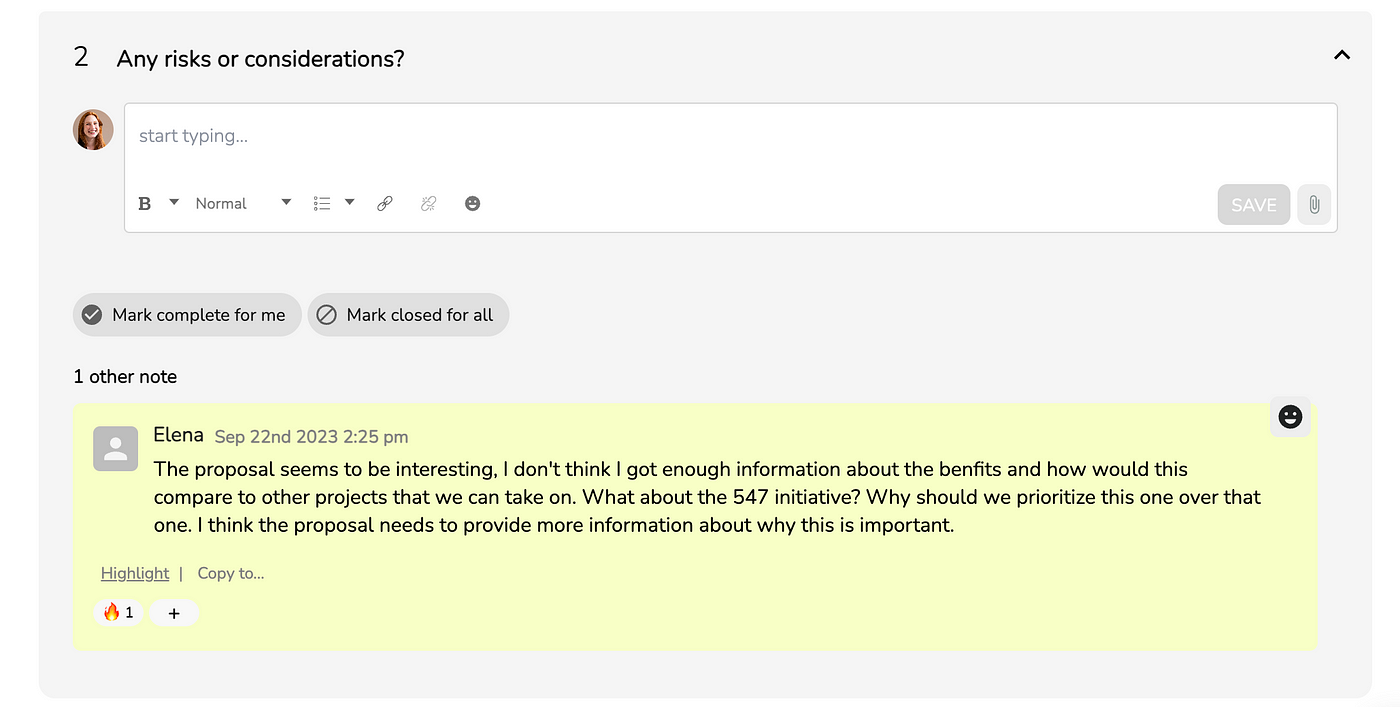
The advantage is that conclusions are carried forward to subsequent meetings or work blocks, keeping all participants informed even if they weren’t part of previous sessions.
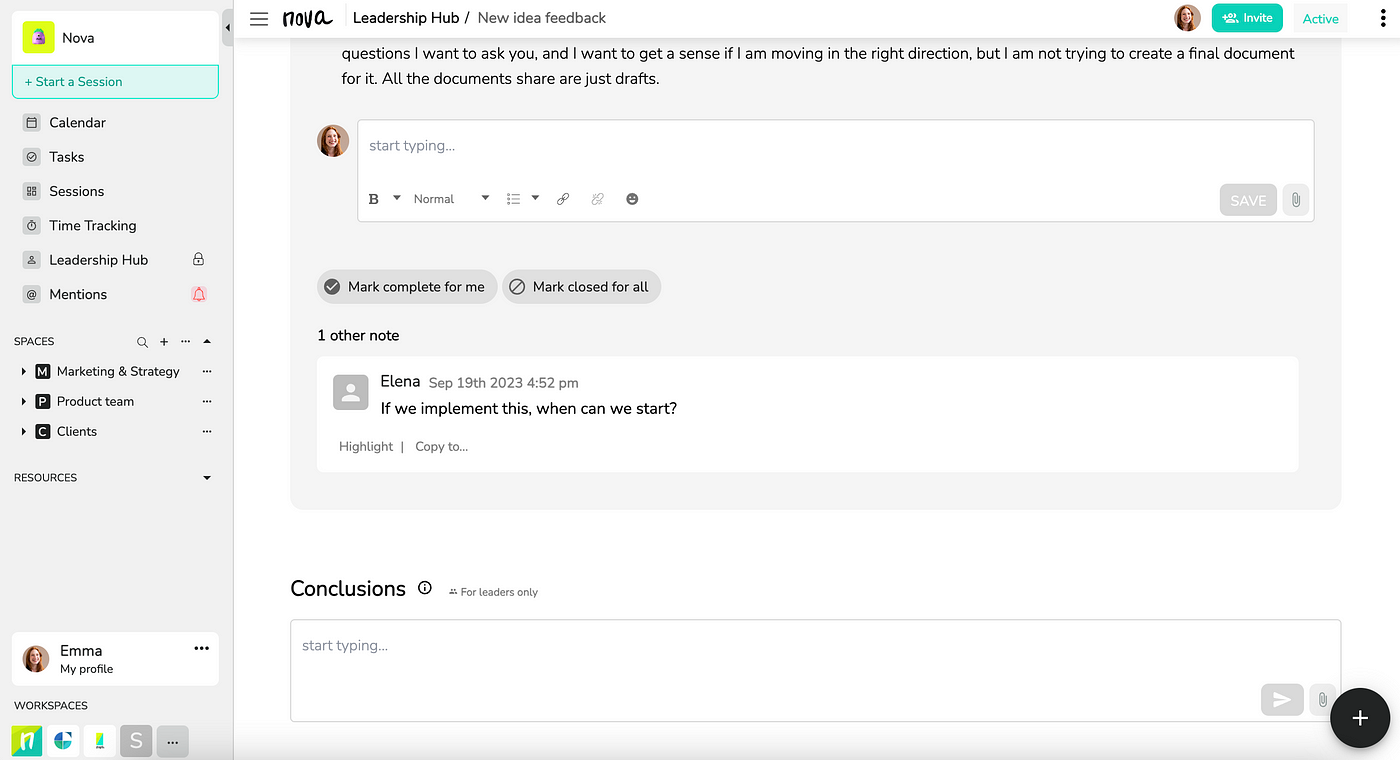
5. Set time limits for asynchronous meetings
Some asynchronous meetings benefit from time constraints to hold participants accountable. While asynchronous meetings offer flexibility, certain situations may require input within a specific timeframe. For instance, when collecting feedback or requirements for a project, setting deadlines ensures you receive the necessary insights on time. With Nova, you can assign due dates and automatically notify participants, enhancing accountability.
6. Combine synchronous and asynchronous meetings
Synchronous meetings still serve essential purposes. They help maintain team connectivity, prevent isolation, and are ideal for activities such as brainstorming, problem-solving, important decisions, and one-on-one interactions that foster team building.
7. Ask questions.
Facilitate the session/meeting
If your team is not familiar with how to best facilitate meetings or asynchronous sessions and doesn’t know how to ask questions to achieve certain objectives and make progress, these questions can help them get an idea of the type of questions they will be asking:
- After reviewing this [proposal/design/other], how do you feel about it? Do you have any major concerns?
- After reviewing this [proposal/design/other], how would you rate this proposal from 1 to 10, with ten being extremely good?
- We have also explored these alternatives, and I would like to share those with you. Which one would you choose? Is there anything from any of those alternatives that is worth exploring further?
- In this [design/proposal/idea], we have considered a [specific use case] and prioritized [specific feature/design/concept/strategy, etc.]. However, our [product/service/business model] often encounters extreme or unique use cases. Can you think of any such scenarios that might not be supported by this [design/solution, etc.]?
- When assessing the usability of this [design/proposal/..] and the user’s journey to accomplish [specific task], can you identify any potential gaps or risks?
- Do you have any additional ideas or recommendations?
- What would you suggest I add or improve?
- What are the primary objectives we aim to achieve with this [proposal/idea/project]?
- Are there any specific limitations or constraints we should keep in mind while reviewing this?
- What are the expected short-term and long-term outcomes of implementing this?
8. Use templates to streamline the process
Starting from scratch can be time-consuming. Thankfully, various templates are available for different types of meetings.
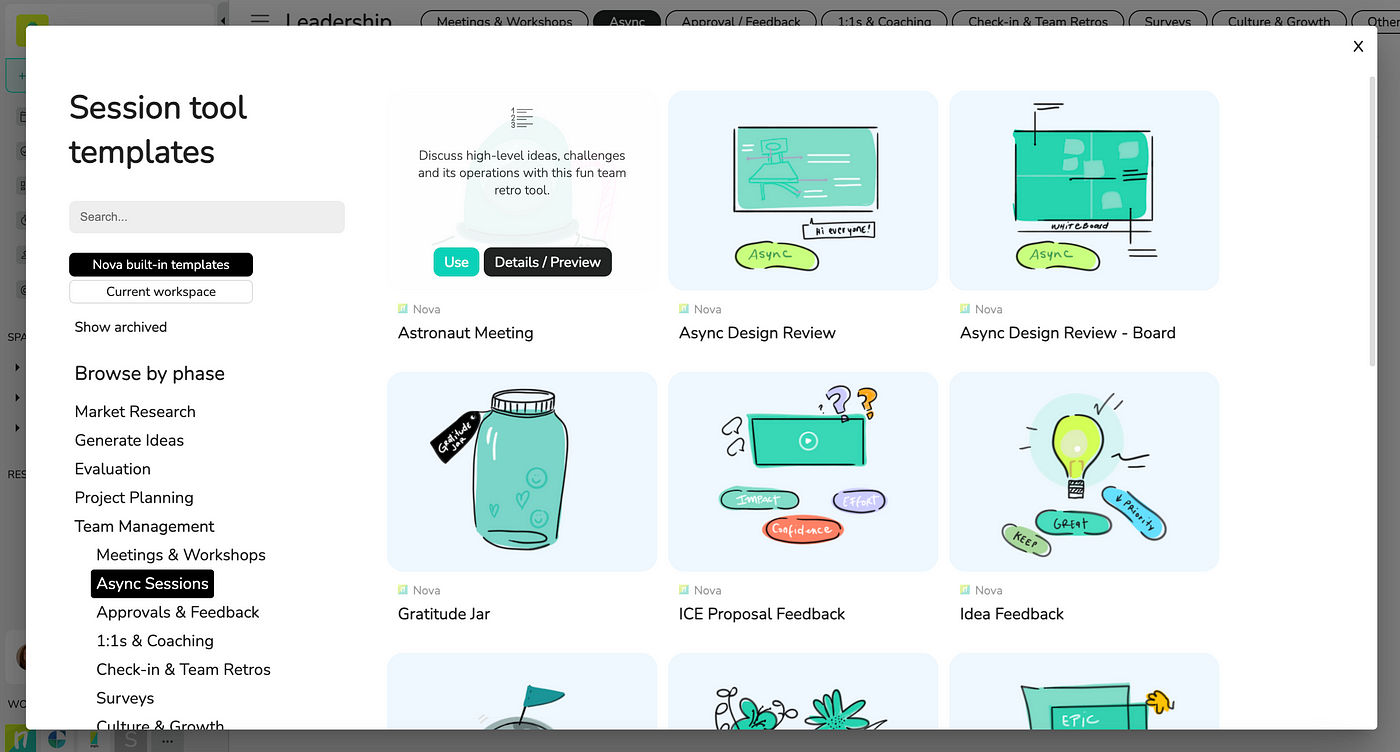
You can select a template that works for you, add content or a brief video, and customize the questions to align with your objectives.
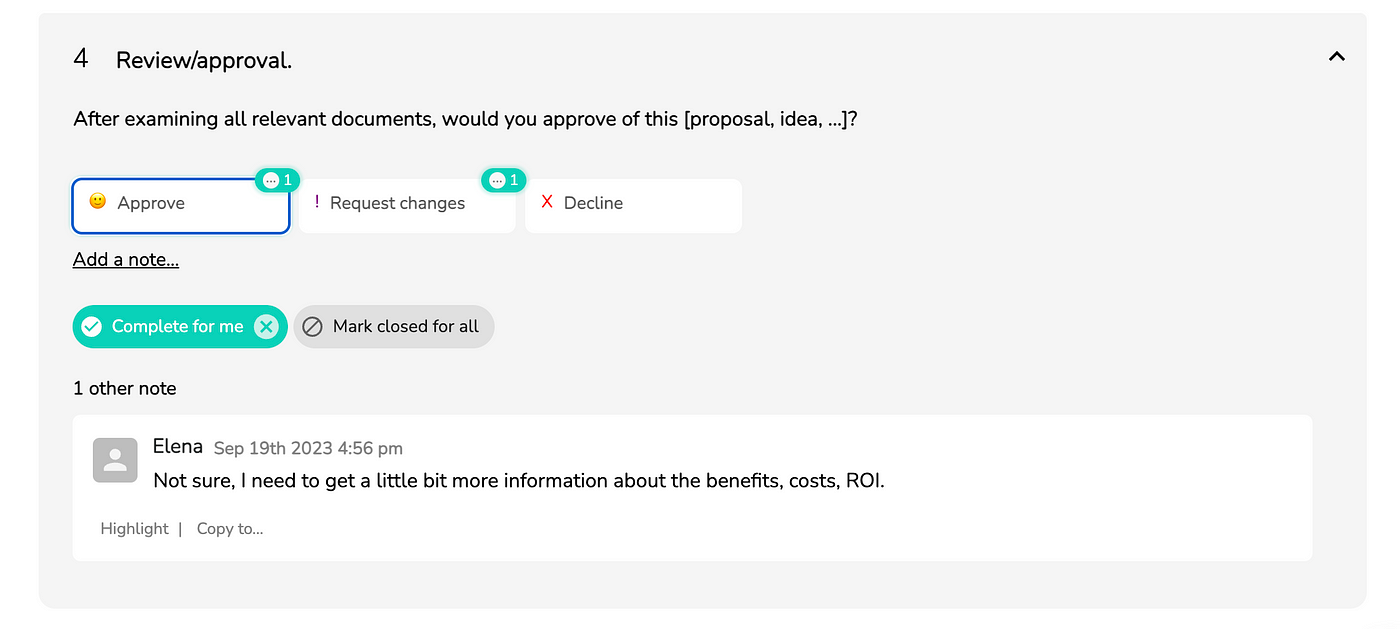
Here are a few recommended templates to consider.
Feedback/Approval:
- ICE Proposal: Assess contributions to goals, and confidence in success, and ask people to share additional ideas. Often great whenever you are still in the ideation phase.
- Proposal or Idea Feedback: Gather opinions, and suggestions for improvement, and identify risks or considerations.
- CRC Tool (Use Case, Risks, Costs): Evaluate proposals or designs based on these criteria: use cases, risks, and costs. While this tool asks questions related to use cases, risks and costs you can add additional questions if you think some of the questions work for you.
- Document Approval: Ensure expectations are clear when seeking document approval, eliminating delays and misunderstandings.
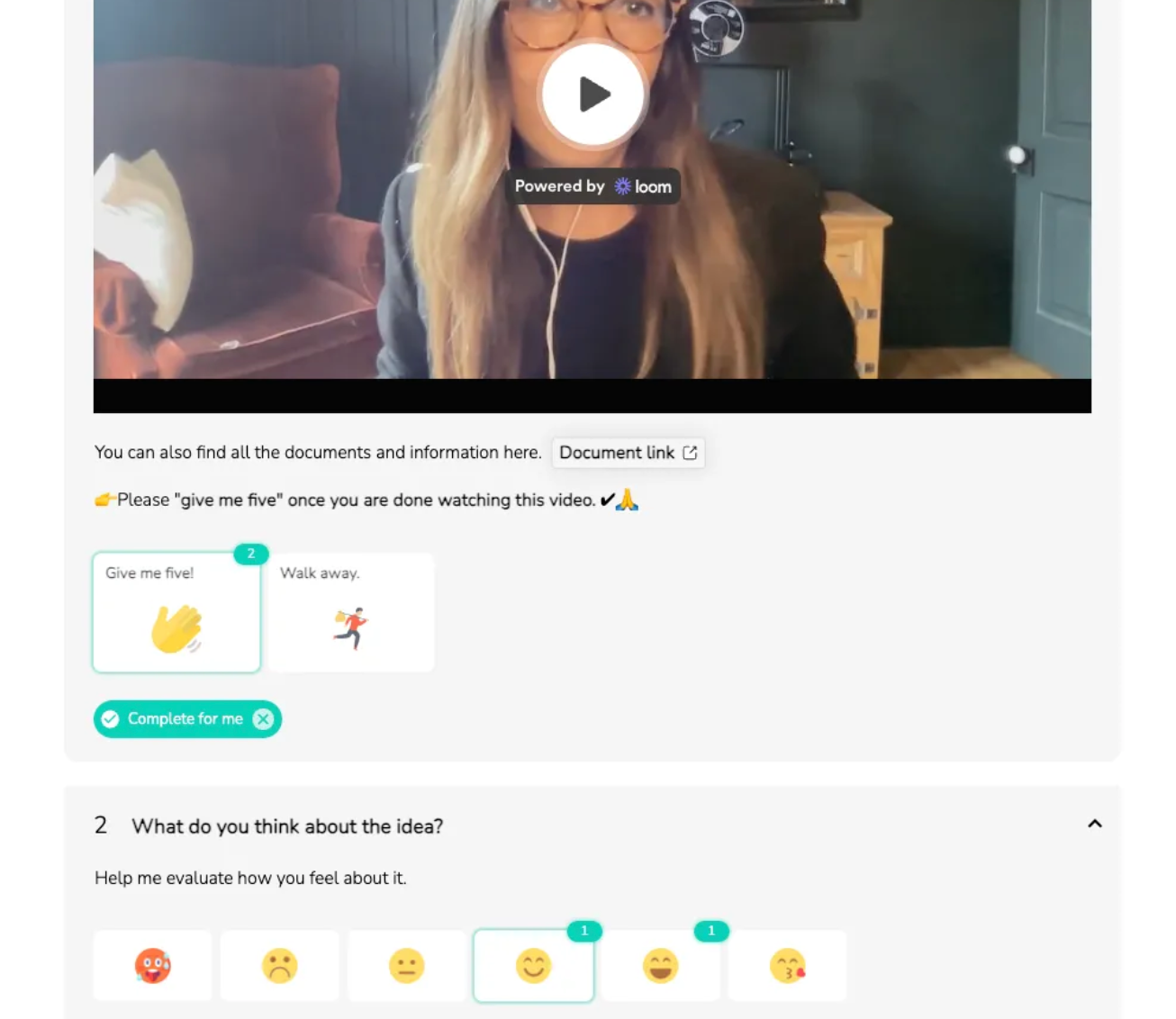
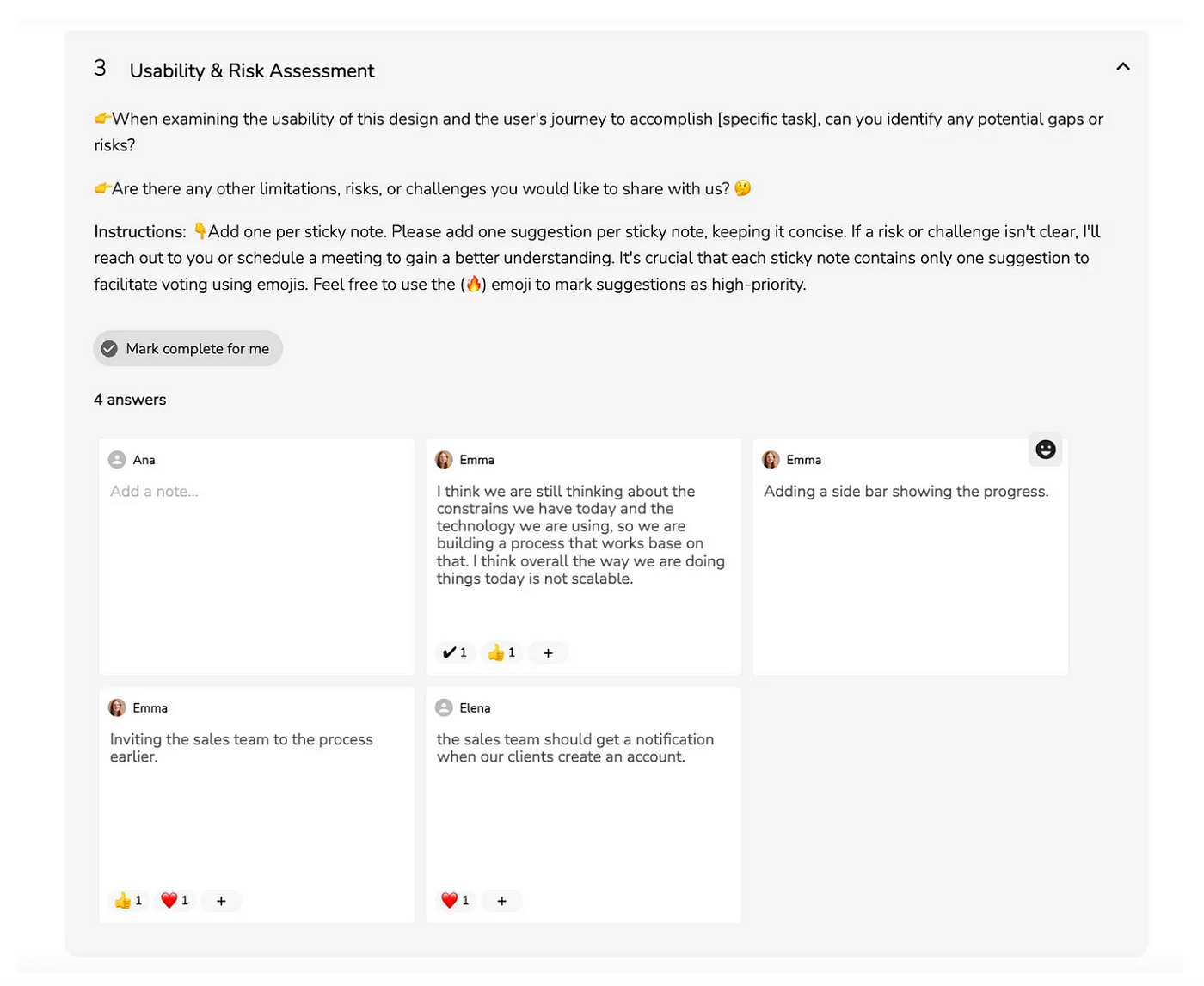
Learn more about Feedback/Approval Tools
Risk Evaluation:
- Stinky Fish: Early meeting to discuss potential risks, uncertainties, anxieties, and fears.
- RAID Analysis: Managing Risks, Assumptions, Issues, and Dependencies RAID analysis is a versatile tool for evaluating factors that can impact a project or idea.
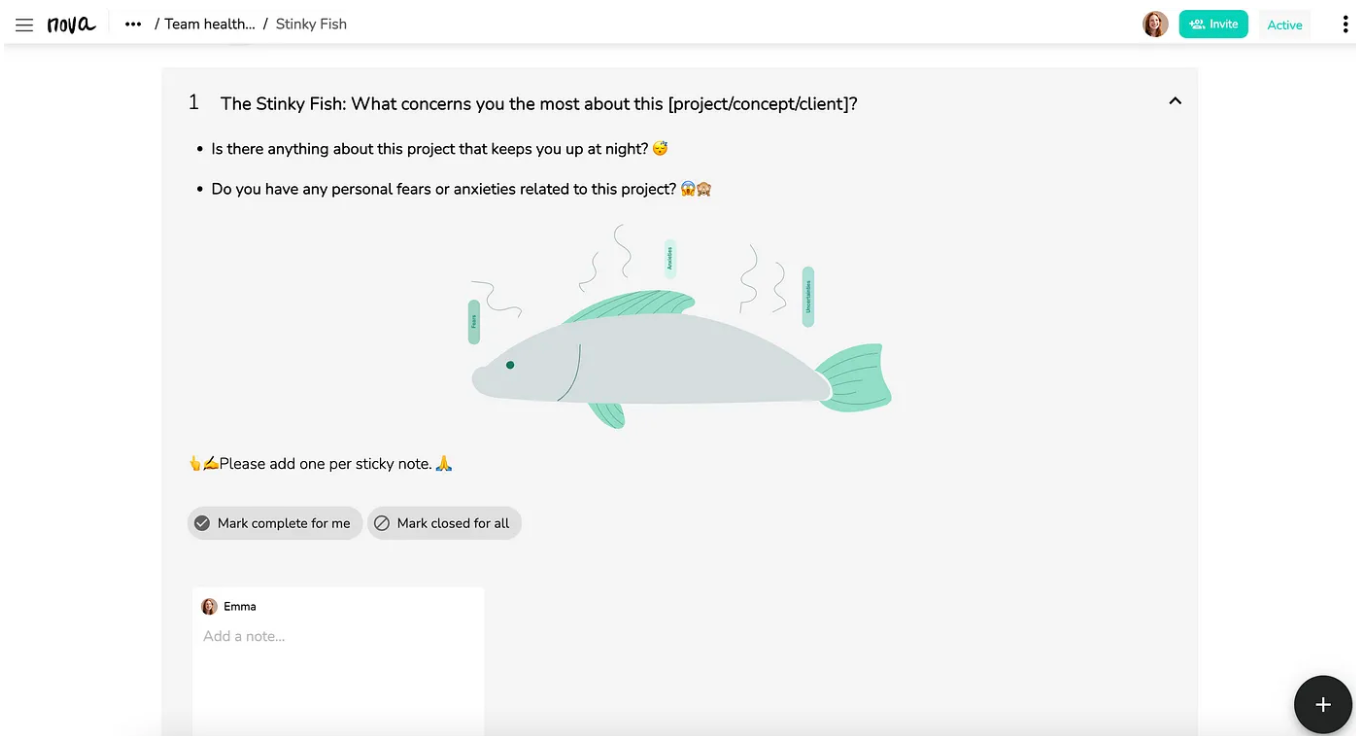
Learn more about Risk evaluations and discussions here.
Team retros:
- Start/Stop Retro: What should you start or stop doing?
- Astronaut meeting: Discuss things like “What could you do better?”
- Quick team retro.
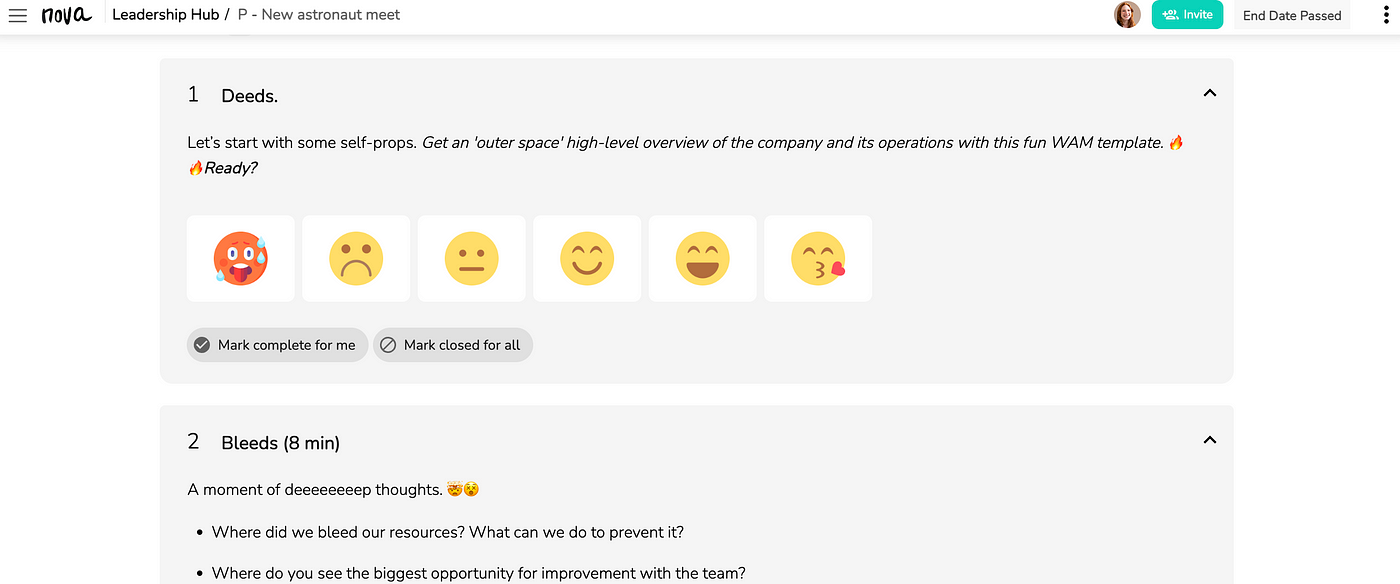

Asynchronous meetings are an incredible way to collaborate and make decisions in today’s new normal.
They save time, lead to better decisions, and help teams maintain their sanity. While synchronous collaboration is still valuable in certain situations, asynchronous communication can often be the superior choice. By implementing these best practices, you’ll be able to maximize its benefits from week one.
